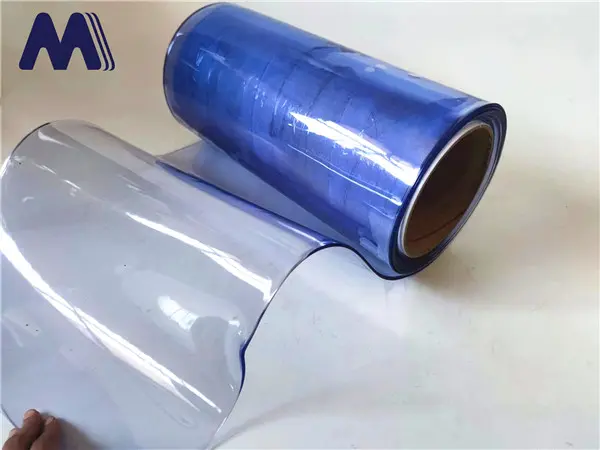Hoʻolauna:
ʻO PVC, a i ʻole polyvinyl chloride, he mea maʻalahi a hoʻohana nui ʻia i ʻike ʻia no kona lōʻihi, kūpono, a me ka maʻalahi. Hoʻohana ʻia ia i nā ʻoihana like ʻole, mai ke kūkulu ʻana a me ka automotive i ka mālama olakino a me ka hoʻopili. ʻO kekahi o nā noi kaulana o PVC ʻo ia ka hana ʻana i nā pale plastik PVC, hiki ke hoʻohana ʻia i nā ʻano like ʻole ma muli o ko lākou maʻalahi a me nā mea pale. Ma kēia blog, e ʻimi mākou i ka honua o hana PVC, e 'imi i nā waiwai o nā pale PVC hikiwawe, a kūkākūkā i kā lākou mau noi like 'ole.
Kaʻina hana PVC:
Hana ʻia ʻo PVC ma o kahi kaʻina kemika paʻakikī e pili ana i ka polymerization o ka monomer vinyl chloride. ʻO Vinyl chloride kahi kinoea kala ʻole i loaʻa ma ka synthesizing ethylene, kahi hydrocarbon i hoʻohana nui ʻia. Ma hope o ka hoʻomaʻemaʻe, vinyl chloride monomer polymerizes e hana i ka resin PVC, a laila hiki ke hana hou ʻia i nā ʻano huahana like ʻole, me nā pale PVC maʻalahi.
Nā pale PVC palupalu:
PVC hikiwawe ʻO nā pale, ʻike ʻia hoʻi ʻo nā pale pale, i hana ʻia mai nā pūhui PVC i hoʻokumu ʻia e hāʻawi i ka maʻalahi a me ka ʻike. Aia kēia mau pale i nā ʻāpana PVC ponoʻī, maʻamau 2 a 5 mm ka mānoanoa, e uhi a hana i kahi pale ʻoiai e ʻae ana i ke komo maʻalahi a me ka ʻike. ʻO ka maʻalahi o nā pale PVC hiki iā lākou ke pale i nā hopena pinepine, e kūpono iā lākou no nā kaiapuni neʻe pinepine e like me ka hoʻouka ʻana i nā pahu a i ʻole nā hale kūʻai.

Nā noi no nā pale PVC palupalu:
1. Kaiapuni hana: ʻO ka pale plastik PVCs hoʻohana nui ʻia i nā hale hana, nā hale kūʻai a me nā mea kanu hana e hoʻokaʻawale i nā wahi hana like ʻole, e like me nā lumi hoʻomaha, nā lumi maʻemaʻe a i ʻole nā lumi welding. Kōkua lākou i ka mālama ʻana i ka wela, e hōʻemi i ka lepo a me nā ʻōpala, a hoʻemi i ka pae walaʻau me ka ʻole o ke kaohi ʻana i ke kahe hana.
2. Nā wahi kūʻai: Hoʻohana pinepine nā hale kūʻai kūʻai kūʻai, nā hale kūʻai kūʻai a me nā lumi kuke pāʻoihana i nā pale PVC e hoʻokaʻawale i nā wahi mālama, nā hale paʻa wāwae a i ʻole nā kuki mai nā wahi ākea. ʻO ke ʻano alohilohi o PVC e ʻae i ka ʻike kūpono, e hōʻoia i ka palekana a me ka maʻalahi o ka nānā ʻana.
3. ʻOihana Ola: Hoʻohana nui ʻia nā pale PVC i nā halemai, nā keʻena lapaʻau, a me nā laboratories e like me nā pale pilikino i nā wahi maʻi a i ʻole e hoʻokaʻawale i nā wahi sterile. ʻO kā lākou mau waiwai antibacterial a me ka maʻalahi o ka hoʻomaʻemaʻe ʻana i kūpono no ka mālama ʻana i nā kūlana maʻemaʻe.
4. ʻOihana kaʻa: Hoʻohana ʻia nā pale PVC i loko o nā lumi ʻauʻau a me nā hale hoʻoheheʻe ʻenehana e loaʻa ai ka wai, ka mea holoi a pena paha i ka ʻae ʻana i ke komo ʻana a me ka puka ʻana.
ʻO nā pōmaikaʻi o nā pale PVC palupalu:
- Hoʻokohu wela: ʻO nā pale PVC e hōʻemi i ka nalowale o ka wela a i ʻole ke ea anuanu, e kōkua ana i ka hoʻoponopono ʻana i ka mahana a me ka mālama ʻana i ka ikehu.
- Hoʻemi Noise: Hoʻemi maikaʻi kēia mau pale i nā pae walaʻau a hana i kahi ʻano hana ʻoluʻolu.
- Hoʻomalu i ka lepo a me nā ʻōpala: pale nā pale PVC i ka lepo, lepo a me nā ʻōpala, e hōʻoiaʻiʻo ana i kahi wahi hana maʻemaʻe.
- Palekana UV: Ua hoʻolālā ʻia kekahi mau pale PVC e ālai i nā kukuna ultraviolet (UV) ʻino, e pale ana i ka mae a i ʻole ka pōʻino i ka ukana a i ʻole nā mea hana maʻalahi.
I ka hopena:
PVC hana a maʻalahi Nā pale PVC pāʻani koʻikoʻi i ka ʻoihana hou, hāʻawi i ka versatility nui a me ka pono. Inā i loko o ka ʻenehana, ʻoihana, mālama olakino a i ʻole kaʻa kaʻa, hāʻawi nā pale PVC maʻalahi i nā hopena maikaʻi a maikaʻi hoʻi e hoʻomaikaʻi ai i ka palekana, ka mālama ʻana i ka mahana a me ka huahana wahi hana. ʻO ka hoʻomaopopo ʻana i ke kaʻina hana PVC a me nā noi o nā pale PVC maʻalahi e hiki ai i nā ʻoihana ke hana i nā koho ʻike ʻoiai e noʻonoʻo ana i kēia mau waiwai waiwai no kā lākou pono kikoʻī.
Post time: Nov-27-2023



